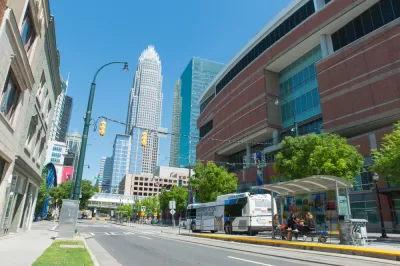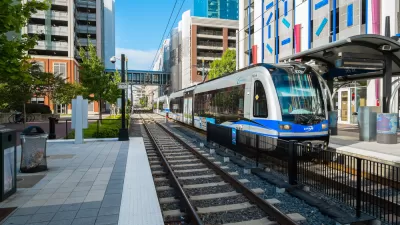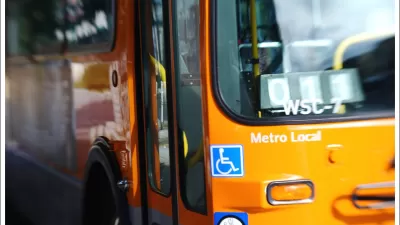The epidemic of falling ridership has struck no American city as hard as Charlotte, but there's plenty that could be done to recover.

American bus transit is in a bad state, and by the numbers, Charlotte, North Carolina is in the worst shape of any large city in the country. "The current CATS transit network simply isn’t working very well for many of the 75 percent of its riders who use the bus. The average one-way travel time for a CATS passenger who has to transfer between routes is 90 minutes," Shannon Binns argues for the Charlotte Observer.
The city has a plan to redesign and grow its bus network to make it more frequent, walkable, and direct. "A redesigned bus network will not only better serve current riders, but also attract new ones. TransitCenter, a New York-based foundation dedicated to transit reform, identifies growth in the number of people who ride transit often and for multiple purposes as an important indicator of whether transit is serving its function of helping a city meet its “triple bottom line” of economic growth, environmental stability, and social equity," Binns reports.
FULL STORY: The secret to attracting more transit riders in Charlotte

Study: Maui’s Plan to Convert Vacation Rentals to Long-Term Housing Could Cause Nearly $1 Billion Economic Loss
The plan would reduce visitor accommodation by 25,% resulting in 1,900 jobs lost.

Alabama: Trump Terminates Settlements for Black Communities Harmed By Raw Sewage
Trump deemed the landmark civil rights agreement “illegal DEI and environmental justice policy.”

Why Should We Subsidize Public Transportation?
Many public transit agencies face financial stress due to rising costs, declining fare revenue, and declining subsidies. Transit advocates must provide a strong business case for increasing public transit funding.

Paris Bike Boom Leads to Steep Drop in Air Pollution
The French city’s air quality has improved dramatically in the past 20 years, coinciding with a growth in cycling.

Why Housing Costs More to Build in California Than in Texas
Hard costs like labor and materials combined with ‘soft’ costs such as permitting make building in the San Francisco Bay Area almost three times as costly as in Texas cities.

San Diego County Sees a Rise in Urban Coyotes
San Diego County experiences a rise in urban coyotes, as sightings become prevalent throughout its urban neighbourhoods and surrounding areas.
Urban Design for Planners 1: Software Tools
This six-course series explores essential urban design concepts using open source software and equips planners with the tools they need to participate fully in the urban design process.
Planning for Universal Design
Learn the tools for implementing Universal Design in planning regulations.
Smith Gee Studio
Alamo Area Metropolitan Planning Organization
City of Santa Clarita
Institute for Housing and Urban Development Studies (IHS)
City of Grandview
Harvard GSD Executive Education
Toledo-Lucas County Plan Commissions
Salt Lake City
NYU Wagner Graduate School of Public Service





























